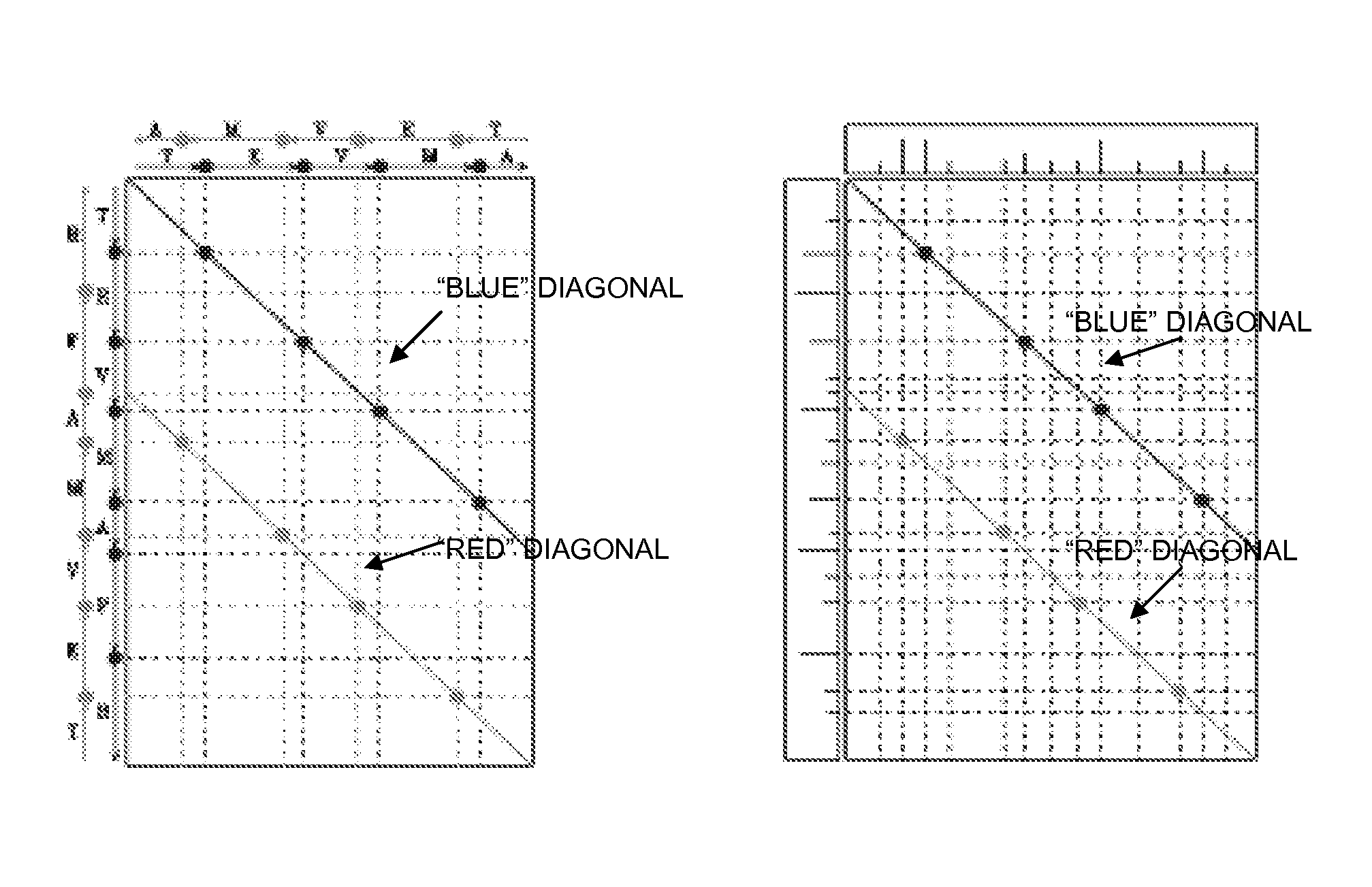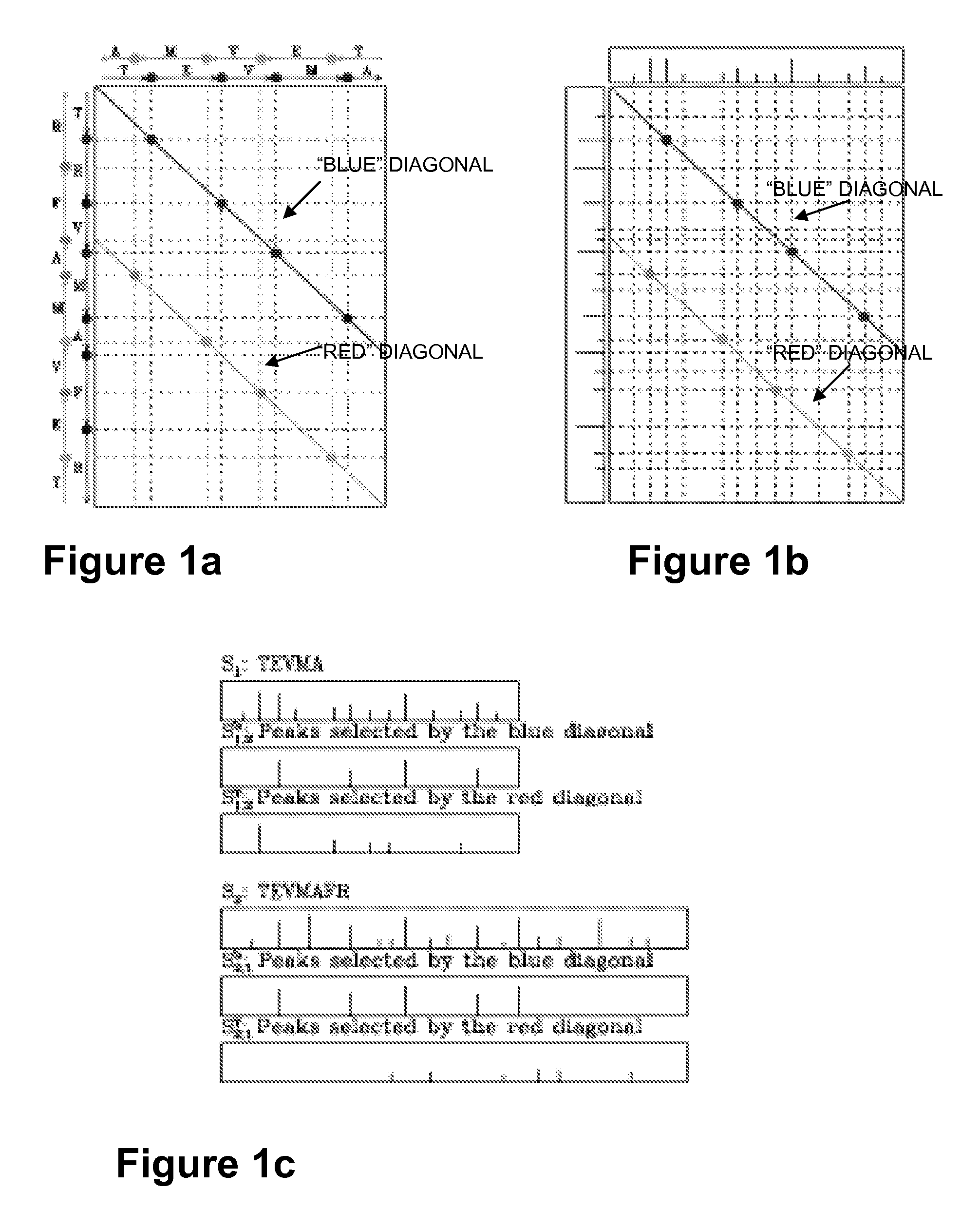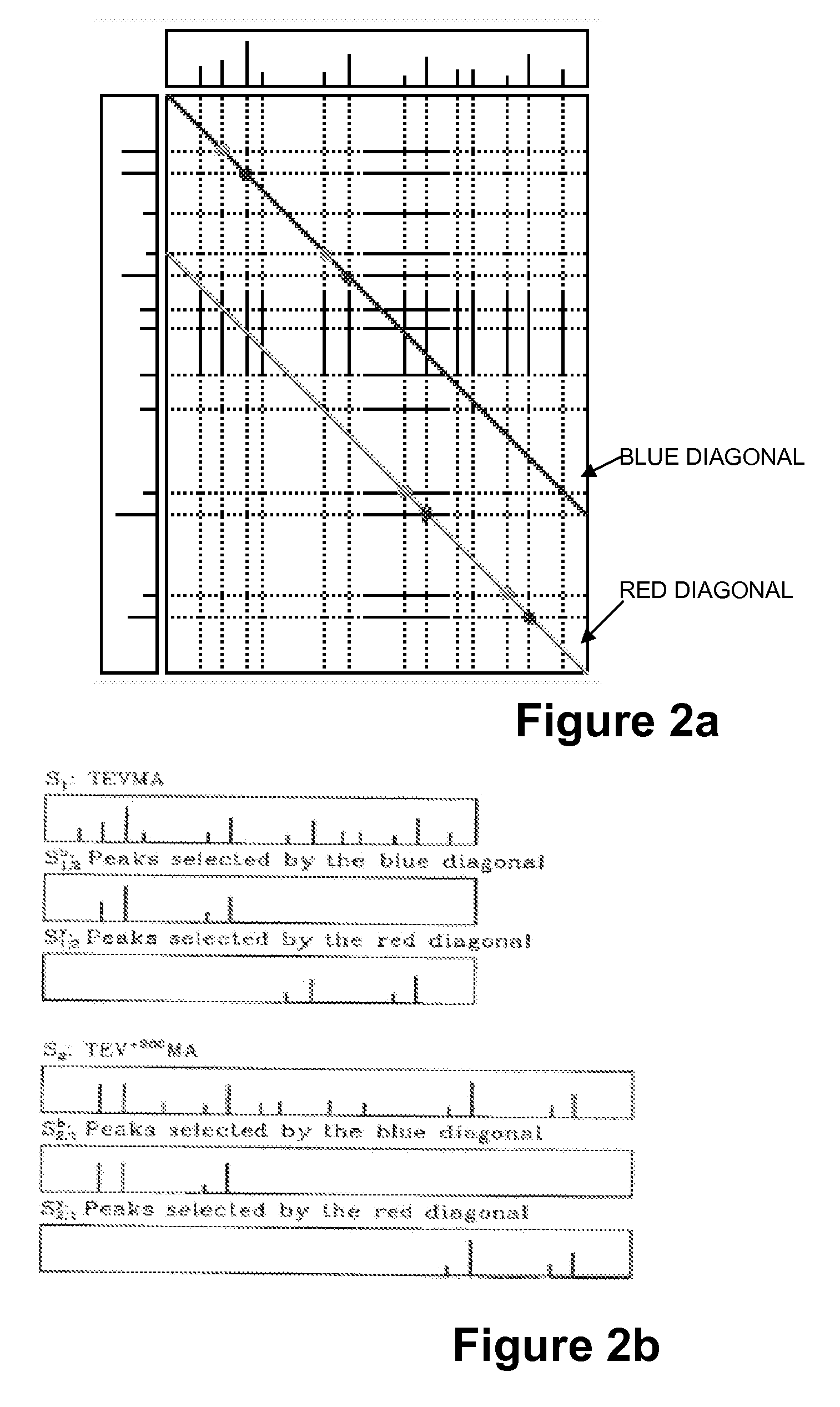Method for identification and sequencing of proteins
a protein and sequence technology, applied in the field of protein identification methods, can solve the problems of trivial implementation of experimental components, difficult to interpret modified peptides, and inability to provide useful information for chemical adducts, and achieve the effect of fast pattern matching
- Summary
- Abstract
- Description
- Claims
- Application Information
AI Technical Summary
Benefits of technology
Problems solved by technology
Method used
Image
Examples
examples
[0108]Dataset 1: The human inhibitor of nuclear factor kappa B kinase beta (IKKb) dataset is a set of MS / MS spectra collected from multiple IKKb samples. Each sample was separately digested with multiple proteases (trypsin, elastase, Glu-C) resulting in an overall rich pattern of spectra from overlapping peptides. IKK is known to be a key signaling complex involved in controlling cell proliferation, survival, anti-apoptosis, and tumorigenesis and its relationships to insulin resistance were the subject of recent intensive studies. The IKKb dataset contains 6126 reliably identified spectra from 524 unmodified peptides and 1383 reliably identified spectra from 346 modified peptides, out of a total of 45,500 MS / MS spectra. (The IKKb dataset has been extensively analyzed using SEQUEST, Mascot, X!Tandem, and InsPecT, resulting in many reliably identified and validated peptides and thus constitutes a gold standard against which to benchmark the performance of the inventive sequencing appr...
PUM
| Property | Measurement | Unit |
|---|---|---|
| mass | aaaaa | aaaaa |
| pH | aaaaa | aaaaa |
| peptide mass tolerance | aaaaa | aaaaa |
Abstract
Description
Claims
Application Information
 Login to View More
Login to View More - R&D
- Intellectual Property
- Life Sciences
- Materials
- Tech Scout
- Unparalleled Data Quality
- Higher Quality Content
- 60% Fewer Hallucinations
Browse by: Latest US Patents, China's latest patents, Technical Efficacy Thesaurus, Application Domain, Technology Topic, Popular Technical Reports.
© 2025 PatSnap. All rights reserved.Legal|Privacy policy|Modern Slavery Act Transparency Statement|Sitemap|About US| Contact US: help@patsnap.com



